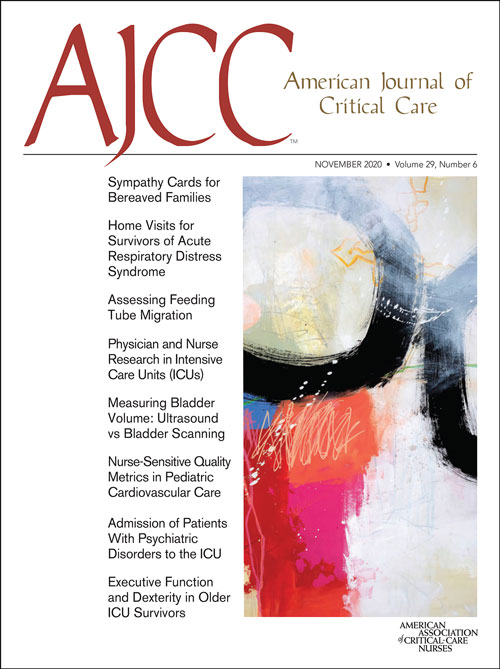In a new commentary published in the Journal of the American Medical Association (JAMA), University of Maryland School of Medicine faculty warn against the use of AI-driven software tools and other large language models to summarize patient medical data without…
Tag: Electronic Health Record
University Hospitals Completes Full Transition to Epic Electronic Health Record
University Hospitals (UH) completed the transition to the Epic electronic health record (EHR) over the weekend. More than 5.6 million patient records and scheduling systems were converted to one unified EHR across the health system.
Analysis Reveals Factors Associated With Patients With Sepsis Who Require Mechanical Ventilation
An analysis of 10 years of health data showed that risk factors for needing mechanical ventilation changed for patients with newly diagnosed sepsis as more time passed after onset.
Logging on for health: More older adults use patient portals, but access and attitudes vary widely
Far more older adults these days log on to secure websites or apps to connect with their health information or have a virtual health care appointment, compared with five years ago, a new poll shows. But it also reveals major disparities, with some groups of older adults less likely to use patient portals, or more likely to have concerns about them.

Survey finds patients value immediate access to test results
A survey sent to more than 43,000 patients living in several states around the country finds that 96% of patients who use patient web portals prefer immediate online access to their clinical test results, notwithstanding the prospect of reviewing results before their physicians have a chance to review them.
MedStar Health Researchers Examine Alleged Misrepresentation of EHR Capabilities with Potentially Far-Reaching Patient Safety Implications
Researchers at MedStar Health, Brigham and Women’s Hospital, and the University of Utah found electronic health record (EHR) vendor misconduct may have led to widespread use of suboptimal products for more than 70,000 clinicians across the country, as published today in JAMA Health Forum.
Integrating Genetic Testing in Electronic Health Records Saves Time, Study Finds
Ordering and managing genomic testing in electronic health records significantly cut the time Penn Medicine clinicians spent doing it
Asking About Food Insecurity at Hospital Admission Is Feasible, Effective
Hospital admission is a worthwhile time to ask patients whether they usually have sufficient food at home, then connect them to community resources if necessary. That conclusion comes from a quality improvement project by Dr. Emily Gore, a recent graduate of the University of Rochester School of Medicine and Dentistry, and colleagues. They describe their project in The Journal for Healthcare Quality (JHQ), an official publication of the National Association for Healthcare Quality that is published in the Lippincott portfolio by Wolters Kluwer.
Advancing Precision Oncology, Ochsner Health First to Fully Integrate with Tempus and Epic’s Genomics Module
Ochsner Health, through its Precision Medicine Program, is the first in the nation to incorporate Epic’s Orders and Results Anywhere integration with its Genomics module.
Health care experts propose policies to encourage shared responsibility between electronic health record developers and users
Developers of electronic health records (EHR) should create or modify their products to ensure that health care organizations can meet safety recommendations of the Safety Assurance Factors for EHR Resilience (SAFER) Guides, according to researchers with The University of Texas Health Science Center at Houston (UTHealth) and Baylor College of Medicine.
Scientists Create a Labor-Saving Automated Method for Studying Electronic Health Records
Scientists at the Icahn School of Medicine at Mount Sinai described the creation of a new, automated, artificial intelligence-based algorithm that can learn to read patient data from electronic health records. In a side-by-side comparison, they showed that their method, called Phe2vec (FEE-to-vek), accurately identified patients with certain diseases as well as the traditional, “gold-standard” method, which requires much more manual labor to develop and perform
Predictive Model Identifies Patients for Genetic Testing
Patients who, perhaps unbeknownst to their health care providers, are in need of genetic testing for rare undiagnosed diseases can be identified en masse based on routine information in electronic health records (EHRs), a research team reported today in the journal Nature Medicine.
EHR Usability Issues Linked to Nurse Burnout and Patient Outcomes
A new study from the University of Pennsylvania School of Nursing’s Center for Health Outcomes and Policy Research (CHOPR) has investigated associations between EHR usability and nurse job outcomes (burnout, job dissatisfaction, and intention to leave) and surgical patient outcomes (inpatient mortality and 30-day readmission).
Cardiac Rehabilitation is Underused Across the Country. One Simple Change Could Fix That.
Making doctors opt out from prescribing cardiac rehabilitation instead of opting in increased referrals by roughly 70 percent

Informatics Approach Helps Reveal Risk Factors for Pressure Injuries
Researchers used informatics to examine 5,000+ patient records and five years of data related to nursing skin assessments and hospital-acquired pressure injuries. The results underscore the importance of treating and monitoring irritated skin early and eliminating the cause as an important step to prevent pressure injuries.